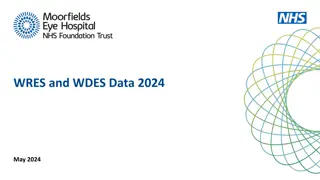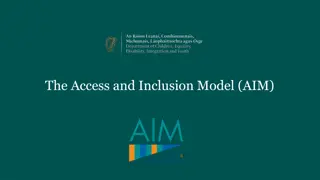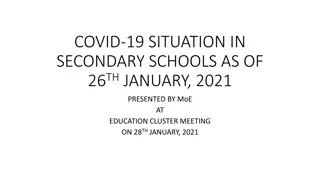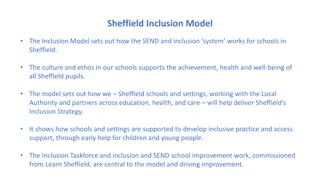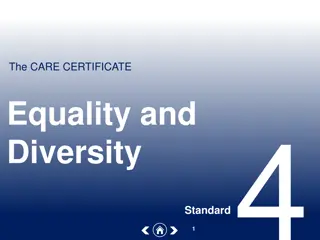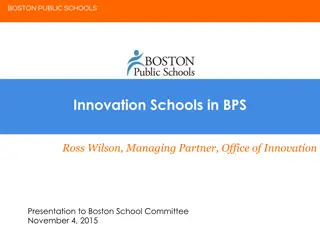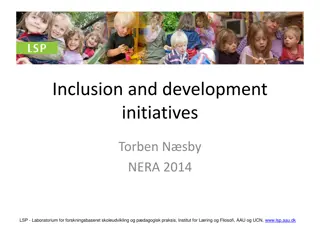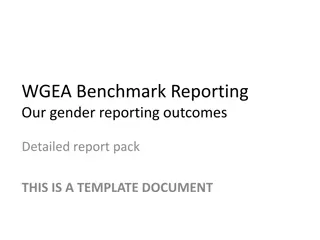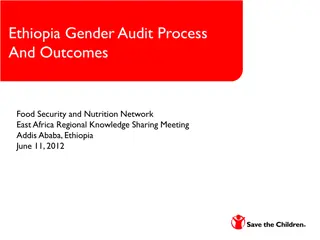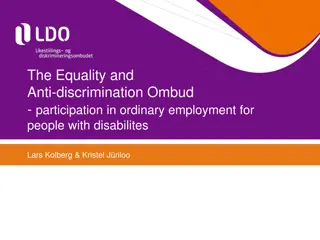The Equality Act 2010 in Schools and Inclusion
The Equality Act 2010 has significantly impacted schools in England, Wales, and Scotland, prohibiting discrimination based on protected characteristics like sex, race, disability, religion, and sexual orientation. It covers four types of discrimination - direct, indirect, harassment, and victimization. Schools are mandated to provide equal opportunities and benefits to all pupils while safeguarding against discriminatory practices.
Download Presentation

Please find below an Image/Link to download the presentation.
The content on the website is provided AS IS for your information and personal use only. It may not be sold, licensed, or shared on other websites without obtaining consent from the author.If you encounter any issues during the download, it is possible that the publisher has removed the file from their server.
You are allowed to download the files provided on this website for personal or commercial use, subject to the condition that they are used lawfully. All files are the property of their respective owners.
The content on the website is provided AS IS for your information and personal use only. It may not be sold, licensed, or shared on other websites without obtaining consent from the author.
E N D
Presentation Transcript
Equality Act 2010 Schools and Inclusion www.worcschildrenfirst.org.uk
Equality Act 2010 The Equality Act 2010 replaced nine major Acts of Parliament and almost a hundred sets of regulations which had been introduced over several decades. It provides a single, consolidated source of discrimination law, covering all the types of discrimination that are unlawful. It simplifies the law by getting rid of anomalies and inconsistencies that had developed over time, and it extends protection against discrimination in certain areas. As far as schools are concerned, for the most part, the effect of the current law is the same as it has been in the past meaning that schools cannot unlawfully discriminate against pupils because of their sex, race, disability, religion or belief or sexual orientation. www.worcschildrenfirst.org.uk
Who and what the Act applies to In England and Wales, the Act applies to all maintained and independent schools, including Academies, and maintained and non-maintained special schools. In Scotland it applies to schools managed by education authorities, independent schools and schools receiving grants under section 73(c) or (d) of the Education (Scotland) Act 1980. The Act makes it unlawful for the responsible body of a school to discriminate against, harass or victimise a pupil or potential pupil: in relation to admissions, in the way it provides education for pupils, in the way it provides pupils access to any benefit, facility or service, or by excluding a pupil or subjecting them to any other detriment. www.worcschildrenfirst.org.uk
Protected characteristics It is unlawful for a school to discriminate against a pupil or prospective pupil by treating them less favorably because of their: sex race disability religion or belief sexual orientation gender reassignment pregnancy or maternity www.worcschildrenfirst.org.uk
The four types of discrimination 1. Direct discrimination 2. Indirect discrimination 3. Harassment 4. Victimisation www.worcschildrenfirst.org.uk
Discrimination Direct discrimination A school must not treat a disabled pupil less favourably simply because that pupil is disabled for example by having an admission bar on disabled applicants. Discrimination arising from disability A school must not discriminate against a disabled pupil because of something that is a consequence of their disability for example by not allowing a disabled pupil on crutches outside at break time because it would take too long for her to get out and back. www.worcschildrenfirst.org.uk
Discrimination Harassment A school must not harass a pupil because of their disability for example, a teacher shouting at the pupil because the disability means that he is constantly struggling with class-work or unable to concentrate. Victimisation Victimisation occurs when a person is treated less favourably than they otherwise would have been because of something they have done ( a protected act ) in connection with the Act. A protected act might involve, for example, making an allegation of discrimination or bringing a case under the Act, or supporting another person s complaint by giving evidence or information, but it includes anything that is done under or in connection with the Act. Even if what a person did or said was incorrect or misconceived, for example based on a misunderstanding of the situation or of what the law provides, they are protected against retaliation unless they were acting in bad faith. The reason for this is to ensure that people are not afraid to raise genuine concerns about discrimination because of fear of retaliation. www.worcschildrenfirst.org.uk
Equality and Disability in schools Schools may and, often, must treat a disabled person more favourably than a person who is not disabled. School will have to make changes to practice so that as far as reasonably possible so that a disabled person will benefit from what schools offer to the same extent as that of a person without a disability. Schools must not do something which applies to all pupils but which is more likely to have an adverse effect on disabled pupils only without implanting reasonable adjustments. Reasonable adjustment. Where a school does something which places a disabled pupil at disadvantage it must take reasonable steps to avoid that disadvantage. Schools have a duty to not only consider reasonable adjustments for particular disabled pupils but also general adjustments which may be needed for disabled pupils Learnership and implementation of wider school context. Schools have a duty to supply auxiliary aids and services as reasonable adjustments where these are not being supplied through EHCPs or from any other source(s) Schools must not discriminate against a disabled pupil because of something that is a consequence of their disability. Schools must implement an Accessibility Plan, which aims to: increase the extent to which disabled pupils can participate in the curriculum; improve the physical environment so disabled pupils can take better advantage of education, benefits, facilities, services ; improve the availability of accessible information to disabled pupils www.worcschildrenfirst.org.uk
Disability A person has a disability for the purposes of this Act if they have a physical or mental impairment which has a substantial and long-term adverse effect on their ability to carry out normal day-to-day activities. (Section 6), Equality Act 2010 www.worcschildrenfirst.org.uk
Definition of SEND Special Educational Provision is defined in terms of provision which is additional to, or otherwise different from, that made generally for children of the same age in mainstream schools . (DfE 2015 p5) A child or young person has SEND if they have a learning difficulty or disability which calls for special educational provision to be made for them. A child of compulsory school age or a young person has a learning difficulty or disability if they: (a) have a significantly greater difficulty in learning than the majority of others of the same age; or (b) have a disability which prevents or hinders them from making use of educational facilities of a kind generally provided for others of the same age in mainstream schools or mainstream post-16 institutions. www.worcschildrenfirst.org.uk
Four areas of SEND Communication and interaction (includes SLCN and Autism) Cognition and learning (Moderate/Severe Learning Difficulties (LD), Profound & Multiple LD, Specific LD: dyslexia, dyscalculia & dyspraxia) Social, emotional and mental health difficulties (anxiety, depression, self-harming, eating disorders, substance misuse, ADD, ADHD, attachment disorder) Sensory and/or physical needs (visual, hearing, multi- sensory, physical & neurological) www.worcschildrenfirst.org.uk
Reasonable Adjustments for SEND Schools must use their Best endeavours: this means doing everything they can to meet children and young people s SEND (DfE 2015 6.2) A minor change for schools is that a failure to make a reasonable adjustment cannot now be justified, whereas under the previous disability discrimination legislation it could be. However, this change should not have any practical effect due to the application of the reasonableness test i.e. if an adjustment is reasonable then it should be made and there can be no justification for why it is not made. Schools will not be expected to make adjustments that are not reasonable. www.worcschildrenfirst.org.uk
Reasonable Adjustments for SEND The Act does not set out what would be a reasonable adjustment or a list of factors to consider in determining what is reasonable. It will be for schools to consider the reasonableness of adjustments based on the circumstances of each case. Considerations may include: Whether it would overcome the substantial disadvantage Practicability of the adjustment The effect of SEND on the pupil Financial and other costs of making the adjustment Whether it will be provided under an EHC (Education, Health and Care) Plan from the local authority The school s resources and the availability of financial or other assistance Health and Safety requirements The need to maintain academic, musical, sporting and other standards The interests of other and prospective pupils www.worcschildrenfirst.org.uk
Reasonable Adjustments and Auxiliary Aids The duty to provide auxiliary aids as part of the reasonable adjustment duty is a change for all schools from September 2012 and extends to maintaining local authorities. The term auxiliary aids found in the Equality Act 2010 covers both auxiliary aids and services but there is no legal definition for what constitutes auxiliary aids and services. Oxford English Dictionary definition of auxiliary as helpful, assistant, affording aid, rendering assistance, giving support or succor and that auxiliary aids and services are things or persons which help. Examples of what may be considered an auxiliary aid could be; hearing loops; adaptive keyboards and special software. The key test is reasonableness and what may be reasonable for one school to provide may not be reasonable for another given the circumstances of each case. Many disabled children will have a SEN and may need auxiliary aids which are necessary as part of their SEN provision; in some circumstances as part of a formal SEN EHCP. These aids may be provided in the school under the SEN route, in which case there will be no need for the school to provide those aids as part of their reasonable adjustment duty. Some disabled children will have a need for auxiliary aids which are not directly related to their educational needs or their participation in school life, for example, things which are generally necessary for all aspects of their life, such as hearing aids. It is likely to be held that it would be unreasonable for a school to be expected to provide these auxiliary aids. www.worcschildrenfirst.org.uk
High quality provision to meet the needs of children and young people with SEND High quality teaching that is differentiated and personalised will meet the individual needs of the majority of children and young people. The quality of teaching for pupils with SEN, and the progress made by pupils, should be a core part of the school s performance management arrangements and its approach to professional development for all teaching and support staff. School leaders and teaching staff, including the SENCO, should identify any patterns in the identification of SEN, both within the school and in comparison, with national data, and use these to reflect on and reinforce the quality of teaching. www.worcschildrenfirst.org.uk
High Quality Teaching High quality teaching, differentiated for individual pupils, is the first step in responding to pupils who have or may have SEN. Additional intervention and support cannot compensate for a lack of good quality teaching. Schools should regularly and carefully review the quality of teaching for all pupils, including those at risk of underachievement. This includes reviewing and, where necessary, improving, teachers understanding of strategies to identify and support vulnerable pupils and their knowledge of the SEN most frequently encountered. www.worcschildrenfirst.org.uk
Teachers and Inclusion Teachers are responsible and accountable for the progress and development of the pupils in their class, including where pupils access support from teaching assistants or specialist staff. CoP 6.36 Where the interventions involve group or one-to-one teaching away from the main class or subject teacher, they should still retain responsibility for the pupil. CoP 6.52 They should work closely with any teaching assistants or specialist staff involved, to plan and assess the impact of support and interventions and how they can be linked to classroom teaching. CoP 6.52 www.worcschildrenfirst.org.uk
Curriculum All pupils should have access to a broad and balanced curriculum. Lessons should be planned to address potential areas of difficulty and to remove barriers to pupil achievement. Such planning will mean that pupils with SEN and disabilities will be able to study the full national curriculum. CoP 6:12 www.worcschildrenfirst.org.uk
Inclusion Statement Teachers should set high expectations for every pupil. They should plan stretching work for pupils whose attainment is significantly above the expected standard. They have an even greater obligation to plan lessons for pupils who have low levels of prior attainment or come from disadvantaged backgrounds Lessons should be planned to ensure that there are no barriers to every pupil achieving. www.worcschildrenfirst.org.uk
Supporting Pupils with SEND Where a pupil is identified as having SEN, schools should take action to remove barriers to learning and put effective special educational provision in place. This SEN support should take the form of a four-part cycle through which earlier decisions and actions are revisited, refined and revised with a growing understanding of the pupil s needs and of what supports the pupil in making good progress and securing good outcomes. This is known as the graduated approach. It draws on more detailed approaches, more frequent review and more specialist expertise in successive cycles in order to match interventions to the SEN of children and young people. www.worcschildrenfirst.org.uk
High Expectations Improved outcomes All children and young people are entitled to an education that enables them to: achieve their best; become confident individuals living fulfilling lives; and make a successful transition into adulthood, whether into employment, further or higher education or training. www.worcschildrenfirst.org.uk
References and Further Reading Equality Act 2010 and schools SEND Code Of Practice 2015 Reasonable Adjustments for Disabled Pupils www.worcschildrenfirst.org.uk



